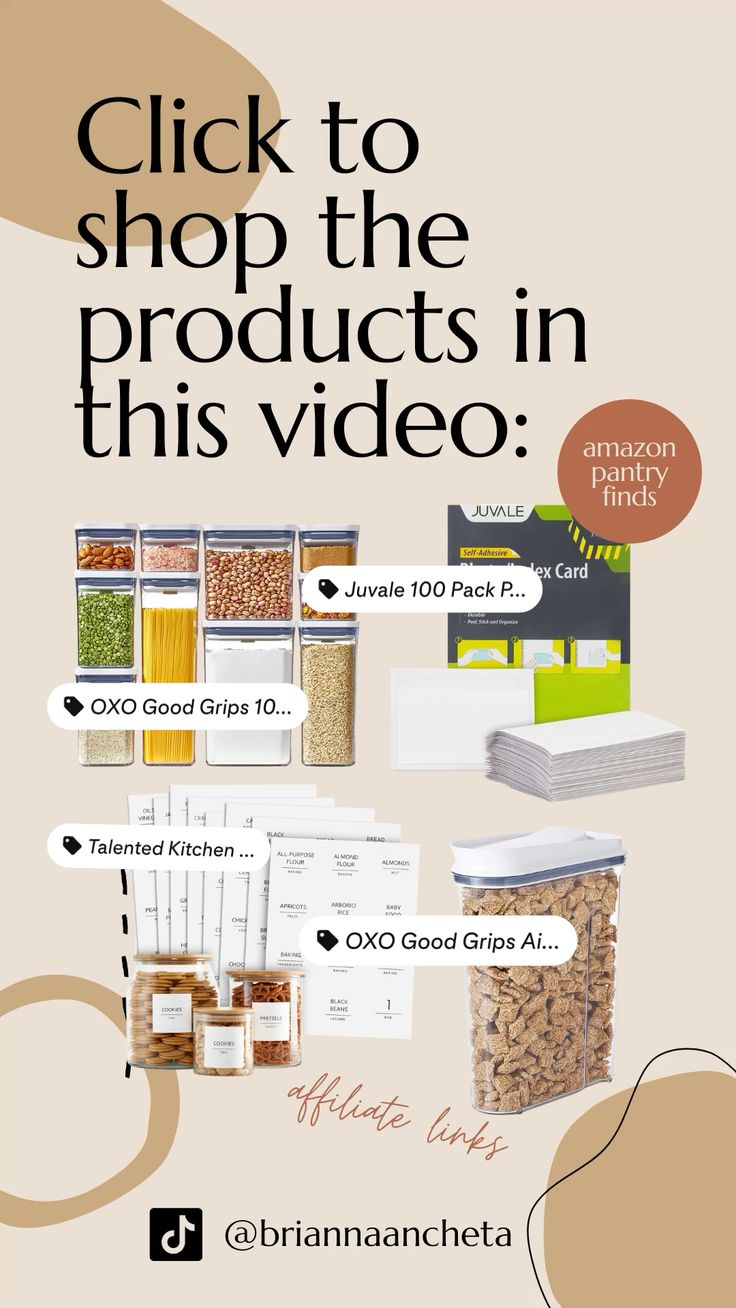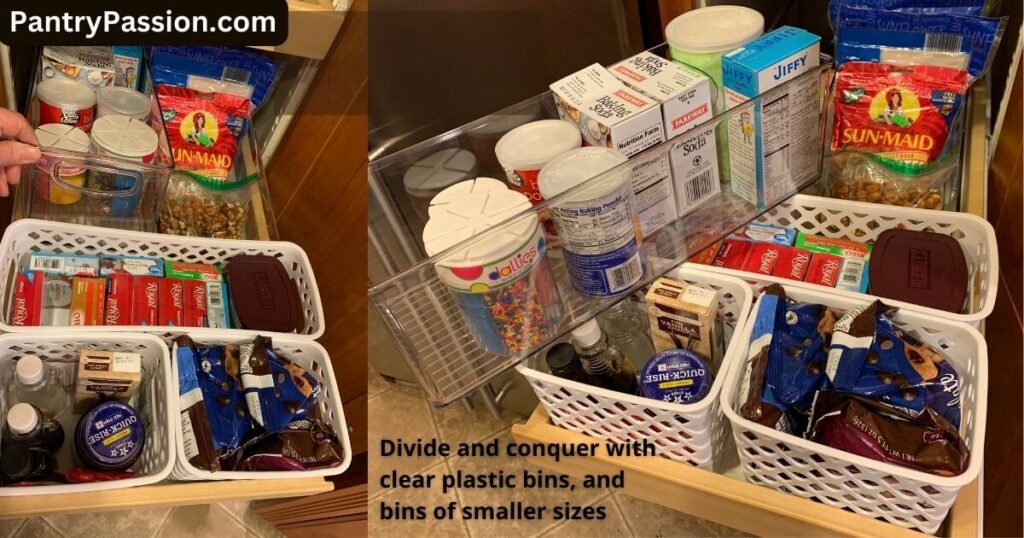

Are your pantry shelves overflowing with a chaotic mix of food items? Do you spend valuable time searching for that specific ingredient, only to emerge with a frustrated sigh and a completely different dish? Pantry shelves overwhelmed? This comprehensive guide provides actionable strategies for effectively categorizing and labeling your pantry items, transforming your kitchen into a well-organized and efficient workspace. We’ll explore various methods for clear labeling, effective categorization, maximizing space, and ultimately achieving a beautifully functional pantry. This article will demonstrate simple steps to achieve order and guide you from overwhelm to organization.
Understanding the Problem: The Overwhelmed Pantry
The Frustration Factor
Many of us face the common problem of a disorganized pantry. It’s more than just a visual eyesore; it impacts our daily routines. Searching for forgotten ingredients, dealing with spilled items, and struggling to find what you need can quickly turn a simple grocery shopping trip into a frustrating endeavor. A messy pantry isn’t just inconvenient; it can also contribute to food waste and spoilage. Items get lost at the back, obscured and hidden from view, making it tough to know what’s there and when it needs to be used up.
Choosing the Right Organization System
Categorization Techniques for Efficiency
Creating a logical categorization system is the cornerstone of successful pantry organization. Consider organizing by food type (e.g., grains, legumes, canned goods), or by usage frequency. A well-organized pantry should also consider the types of foods you store the most to ensure you have a system that addresses your specific needs.
Related Post : Toys Scattered Everywhere? Simple Ideas to Keep Play Areas Tidy
Label Design for Clarity
Implementing a consistent labeling system is crucial for clear identification of items. Use a combination of color-coded labels, easily readable fonts, and clear descriptions for all items.
Utilizing Containers and Bins for Enhanced Storage
Containers and bins aren’t just for aesthetics; they’re also crucial for maintaining order and preventing spills, especially for items like cereal, rice, and pasta. Use airtight containers or bins to keep food fresh and prevent pests. This helps maintain freshness and makes it easy to see how much you have in each container.
Implementing the System: Step-by-Step Guide
Decluttering and Inventory
Begin by thoroughly decluttering your pantry. Remove any expired or damaged items, ensuring that you only have the products you need and use regularly. Make an inventory list of the items that will stay, recording the quantity and type of each item. This will give you a clearer picture of what you have available and what you may need to replenish.
Categorizing and Sorting
Based on the inventory list, categorize items into logical groups based on their type or usage. This may involve categories such as grains, pasta, legumes, canned goods, and condiments. Then, sort items within each category based on expiration dates. Place the items with the soonest expiration dates at the front to ensure they’re used first.
Labeling and Placement
Carefully label each container or bin using clear, concise labels. Include the item name, quantity, and the date of purchase/expiry. Arrange items on the shelves based on their category and usage frequency. Items used regularly should be placed at eye-level and easily accessible.
Maximizing Space: Clever Storage Solutions
Vertical Organization
Maximize vertical space by using stackable containers, shelves, or even tall canisters. This allows for maximum storage capacity within a limited space.
Drawer Organization
Utilize drawer dividers to prevent items from sliding around and taking up extra space. This is especially useful for storing spices, sauces, and small items.
Maintaining Order: Ongoing Organization
Regular Review and Adjustments
Review your pantry organization regularly to ensure everything is still functioning well. Adjust categories and locations as needed to maintain optimal order.
Emptying and Cleaning
Regularly empty and clean the shelves and containers. This removes dust, food particles, and potential pest attractants, maintaining a sanitary and functional environment. This step ensures the pantry remains clean and free of any pests or contaminants.
Additional Tips
Prioritizing Food Safety
Ensuring the safety of the foods you store is crucial. Organize items with similar expiration dates together to ensure you use them before they expire. Checking expiration dates regularly is vital. This keeps food safe and prevents spoilage or consumption of past-due items.
Maintaining Consistency
Maintaining a consistent organization system is critical to keeping your pantry orderly. Reviewing the system periodically ensures that the organization is efficient and suitable to your needs.
Visual Appeal
A visually appealing pantry can contribute positively to a positive cooking experience. Use attractive containers or shelves to maintain a nice look.
Utilizing Space-Saving Solutions
Employing stackable containers or shelves maximizes vertical storage and conserves space.
Conclusion: Taking Control of Your Pantry
Final Thoughts
By following these strategies, you can transform your overwhelming pantry shelves into an organized and efficient space. The effort put into organizing your pantry pays off with less stress, greater efficiency, and a more enjoyable cooking experience. Ultimately, creating a well-organized pantry is an investment in your kitchen workflow and daily comfort. It’s time to reclaim your kitchen and start enjoying a better way to cook.
Tips for Creating a Functional Pantry
Space-Saving Tips
Consider the use of wall-mounted shelves to optimize space and eliminate clutter on countertops. Employing stackable containers, particularly tall containers, is essential for maximizing vertical space. Utilizing tall canisters or stackable baskets offers additional space for storing various items. This approach enhances storage capacity without sacrificing valuable countertop or floor space.
Maintaining Order
Reviewing and adjusting the categorization system based on your needs, frequency of usage, or even the type of foods you frequently use. Regularly cleaning and removing unused or expired products is crucial to maintain sanitary conditions. Addressing any spills or food particles immediately can prevent attracting pests or rodents.
Choosing the Right Containers
Types of Containers
Consider various types of containers, including airtight containers for dry goods, clear containers for easy visibility, and reusable storage bags for flexible and convenient storage. Utilizing a combination of these types can significantly enhance your pantry’s functionality. This mix ensures efficiency and prevents pests or contaminants from affecting your stored food.
Material Considerations
Opt for durable and BPA-free containers to ensure food safety. Choose materials that are easy to clean and maintain to ensure hygiene and sanitation. This approach maintains a clean and tidy pantry, creating a comfortable environment for cooking and food preparation.
In conclusion, organizing your pantry shelves effectively with a clear categorization and labeling system is key to achieving a functional and aesthetically pleasing kitchen. This streamlined approach saves time, reduces stress, and promotes a more positive cooking experience. By utilizing the strategies discussed, you can conquer that overwhelming pantry and unlock the full potential of your kitchen storage. Remember, consistency is key; implement these techniques today and experience the lasting benefits tomorrow. Don’t let pantry shelves overwhelm you any longer; take control today!